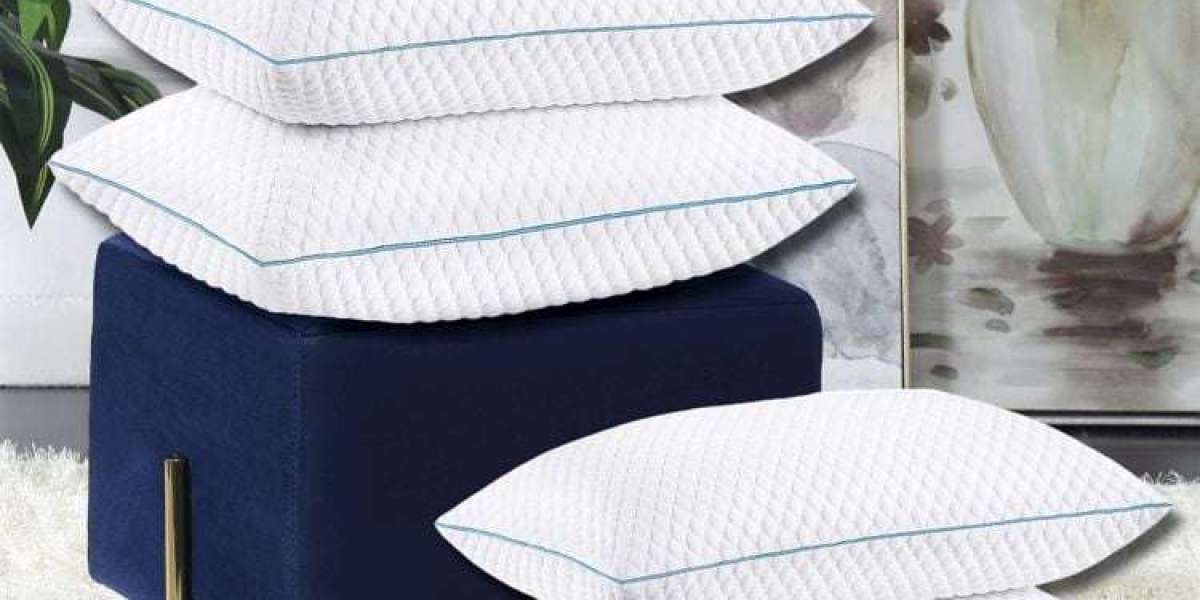A good pillow does much more than support the head—it plays a vital role in maintaining spinal alignment and relieving pressure points that can interfere with quality sleep. Pillows designed specifically for pressure relief can unlock deeper, more restorative rest by reducing tension in critical areas like the neck, shoulders, and upper back.
Understanding Pressure Points During Sleep
Pressure points are areas of the body where weight is concentrated during sleep. These include the neck, shoulders, hips, and knees, depending on your sleeping position. When a pillow fails to provide the necessary support, it can create uneven pressure, leading to stiffness, discomfort, and frequent waking throughout the night. Over time, this can contribute to chronic pain or poor posture, which in turn disrupts the body’s natural rest and recovery process.
A pillow designed for pressure relief is crafted to distribute weight more evenly and cushion these sensitive areas. This helps muscles relax and reduces the strain on joints, allowing the sleeper to stay in a comfortable position longer without needing to shift constantly during the night.
The Science of Pressure-Relieving Pillows
Pressure-relieving pillows are typically made from adaptive materials such as memory foam, latex, or specially engineered fiber fills. These materials conform to the shape of the head and neck, cradling them in a way that aligns the spine and minimizes stress on pressure points. Unlike traditional pillows that may flatten or shift during sleep, these options retain their shape and support throughout the night.
The design often takes into account various sleep positions, whether you’re a side sleeper, back sleeper, or stomach sleeper. Each position requires a different level of elevation and contouring, and a well-designed pillow can provide tailored support. For example, side sleepers often benefit from firmer, thicker pillows that fill the space between the head and shoulder, while back sleepers may need a medium loft that gently supports the curve of the neck.
Improved Sleep Quality Through Proper Support
The benefits of using a pillow designed for pressure relief go beyond physical comfort. When the body is properly supported, it can remain in deeper stages of sleep for longer periods. These deeper stages—especially slow-wave and REM sleep—are critical for physical recovery, memory consolidation, and emotional processing. Waking up frequently due to discomfort or improper alignment interrupts these vital cycles, leaving you feeling groggy or unrested.
With the right pillow, your muscles can fully relax, your breathing remains unobstructed, and your nervous system has the opportunity to reset. This leads to more consistent, high-quality rest and a noticeable difference in how you feel upon waking.
Pillows and Long-Term Health Benefits
Over time, investing in a pillow that relieves pressure can have a significant impact on your health. Chronic tension in the neck and shoulders can lead to headaches, reduced range of motion, and even nerve irritation. By supporting the cervical spine and promoting natural alignment, pressure-relieving pillows help prevent these issues before they begin.
They also assist with posture correction during sleep. Poor sleeping posture can undo the benefits of daytime habits like stretching, exercise, or ergonomic workstations. A pillow that maintains the neck's neutral position ensures that the spine remains aligned through the night, supporting your overall posture and reducing daytime discomfort.
Additionally, improved sleep contributes to better immune function, lower stress levels, and greater mental clarity. In this way, a high-quality pillow is not just a sleep aid—it becomes a tool for supporting holistic wellness.
What to Look for in a Pressure-Relieving Pillow
Choosing the right pillow for pressure relief involves paying attention to material, loft, firmness, and shape. While personal preference plays a role, the key factor should always be whether the pillow maintains alignment and relieves tension in your usual sleeping position.
It’s also important to consider breathability and temperature regulation. Many pressure-relieving materials, especially memory foam, can trap heat. Look for pillows that incorporate cooling technologies or breathable covers to ensure comfort throughout the night. A hot pillow can disturb sleep just as much as a misaligned one.
Durability is another factor to keep in mind. A good pressure-relieving pillow should maintain its shape and support for at least a few years without significant sagging or flattening. Regular maintenance, such as fluffing or rotating, can help prolong its life and effectiveness.
Conclusion
Unlocking deeper sleep often begins with re-evaluating the basics of your sleep setup, and a well-designed pillow can make a world of difference. By targeting and relieving pressure points, these specialized pillows offer a more supportive and restorative sleep experience. Whether you’re recovering from long workdays, managing stress, or simply seeking better rest, investing in a pillow that focuses on pressure relief is a practical and impactful choice.
Improved alignment, reduced tension, and uninterrupted sleep are just a few of the benefits you can expect. Over time, this leads not only to more restful nights but also to healthier, more energized days. So if you've been struggling with poor sleep or lingering aches, the answer might be right beneath your head.



